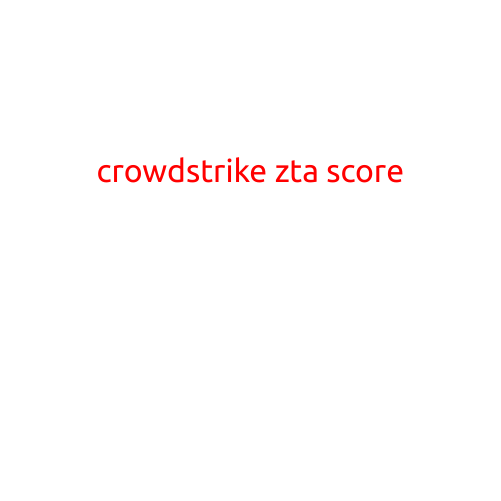
Zero Trust: The Security Game-Changer with CrowdStrike
In today’s digital landscape, cybersecurity has become a top priority for organizations of all sizes. With the rise of remote work, cloud computing, and BYOD (Bring Your Own Device) policies, traditional network perimeter-based security models are no longer effective. That’s where Zero Trust comes in – a security approach that verifies and authenticates every device and user before granting access to resources. In this article, we’ll explore the benefits of Zero Trust and how CrowdStrike is helping organizations adopt this innovative security strategy.
What is Zero Trust?
Zero Trust is a cybersecurity model that assumes that all networks, devices, and users are compromised and should be verified and authenticated before granting access to resources. This approach is in contrast to traditional security models, which rely on perimeter defenses to keep the bad guys out. Zero Trust is all about trust no one, verify everything.
Why is Zero Trust necessary?
With the increased reliance on cloud computing, IoT devices, and remote work, traditional network perimeter defenses are no longer sufficient. Hackers have evolved their tactics, techniques, and procedures (TTPs) to target humans, not just networks. Zero Trust is essential to protect against modern threats such as:
- Email phishing attacks
- Credential theft and abuse
- Malware and ransomware attacks
- Insider threats
How does CrowdStrike implement Zero Trust?
CrowdStrike, a leading cloud-based cybersecurity company, offers a comprehensive Zero Trust solution that integrates various security capabilities to provide a strong defense against modern threats. Here’s a snapshot of how CrowdStrike approaches Zero Trust:
- Endpoint Detection and Response (EDR): CrowdStrike’s Falcon EDR provides real-time visibility and analysis of endpoint activity, allowing you to detect and respond to threats in seconds.
- Cloud-based Threat Intelligence: CrowdStrike’s cloud-based threat intelligence combines advanced threat hunting and analytics to identify and block malicious activity.
- User and Entity Behavior Analytics (UEBA): CrowdStrike’s UEBA technology uses machine learning and behavioral analytics to identify and flag suspicious user and entity activities.
- Predictive Security: CrowdStrike’s predictive security uses AI-powered threat models to predict and prevent attacks before they happen.
- SouceCode: CrowdStrike’s SourceCode platform provides a comprehensive threat intelligence feed, which includes threat data, threat actor behavior, and attack patterns.
Benefits of Zero Trust with CrowdStrike
Adopting a Zero Trust approach with CrowdStrike offers numerous benefits, including:
- Enhanced security: CrowdStrike’s Zero Trust solution provides a strong defense against modern threats, including email phishing attacks, malware, and insider threats.
- Improved visibility: With CrowdStrike’s EDR and UEBA capabilities, you gain real-time visibility into endpoint activity and user behavior, making it easier to detect and respond to threats.
- Reduced risk: CrowdStrike’s predictive security and threat intelligence capabilities help reduce the risk of attacks by anticipating and preventing threats before they occur.
- Simplified security management: CrowdStrike’s cloud-based platform simplifies security management, reducing the complexity and cost associated with traditional security solutions.
- Compliance: CrowdStrike’s Zero Trust solution supports compliance with various regulations, including GDPR, HIPAA, and PCI-DSS.
Conclusion
In today’s digital landscape, Zero Trust is no longer a nice-to-have, but a must-have security strategy. CrowdStrike’s comprehensive Zero Trust solution offers a powerful defense against modern threats, providing enhanced security, improved visibility, and reduced risk. By adopting a Zero Trust approach with CrowdStrike, organizations can protect their assets, reduce the risk of attacks, and ensure business continuity.





